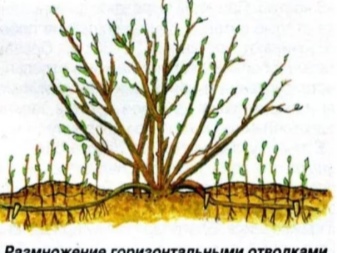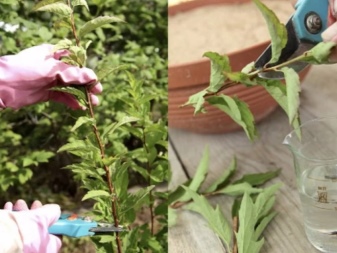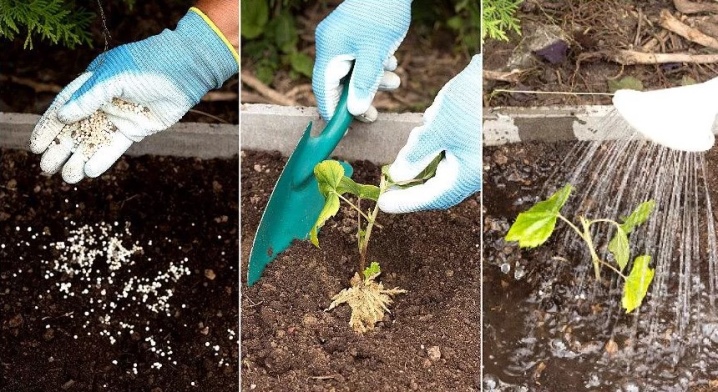How to plant?
Although spiraea Bulmada does not require special conditions, the following nuances should be taken into account when planting it:
- in order for the shrub to show all its decorative properties, it is better to choose a site with good lighting, in the shade, the leaves and buds will not have a bright color;
- for planting, a plot on the south side is optimal, with a small number of trees that give the bush shading;
- any soil is suitable for meadowsweet, but to preserve the decorative effect of the shrub, it is better to choose sod or leaf;
- The ideal soil composition for a shrub is 2 parts of soil, 1 part of peat and 1 part of sand.
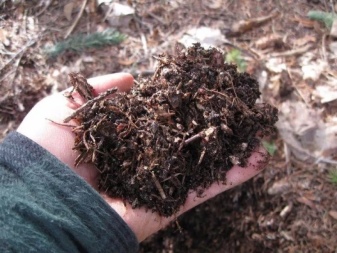

Planting is best done in April. The seedlings must have a strong root system without damage. The planting hole should be made about a third larger than the volume of the root system, it should be 40-50 cm deep. If the soil was not mixed with sand and peat, they can be brought directly into the dug depressions, but then they should be done in 3 times larger than the size of the roots. You can also add a little humus to the pits.
The plant is placed in a hole, straightening the roots well, and sprinkled with earth. The root collar of the seedling should be flush with the ground. The roots of the plant can be either with an earthen clod or bare. In the second case, the seedling should be kept in a stimulant solution for about 24 hours. The planted plant is watered with warm water.
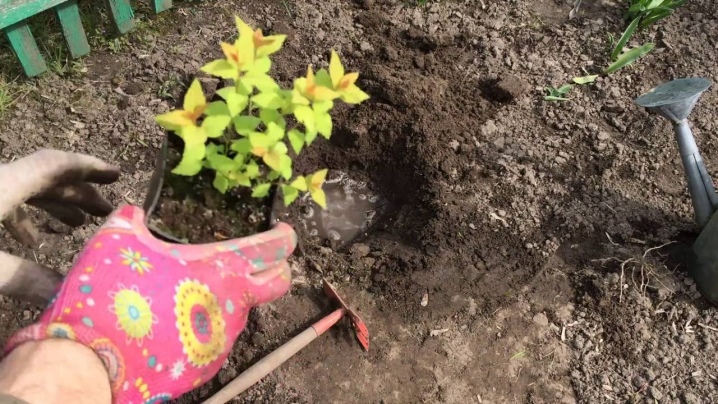
If placed too densely, the bushes will not be able to grow. Spirea Bumalda does not react well to increased indicators of soil moisture, which often affects flowering. If there is groundwater on the site, the bush may die. To avoid negative consequences in such a situation and to preserve the plant, it is necessary to dig a hole another 15–20 cm deeper, pour gravel or gravel into it and sprinkle it with earth. Only then plant the bush. Thus, groundwater will not harm the shrubbery.
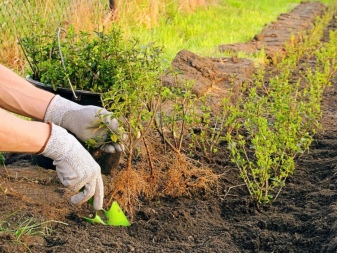
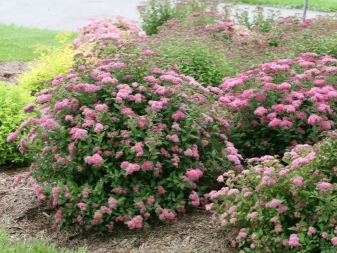
Spirea: main types and varieties
Spirea name (Spiraea) got from the ancient Greek word “speira” - spiral, bend. The branches are very graceful and in most species they bend beautifully, which was the reason for the Latin name of the genus. But we also have our own popular name for this shrub - meadowsweet (with the accent in the south on the last syllable, and in the north on the first). This is not entirely correct, since the genus meadowsweet (Filipendula) includes, although similar to spirea, but only herbaceous plants, while all spireas are shrubs of different sizes.
Note! In some sources (for example, in the publication "Flora USSR", 1934-1964) for the genus Tavolga (Filipendula), the only Russian name of the genus is given - Labaznik, while the name Tavolga is used for the genus Spirea (Spiraea)
.

Spirea Cantonese
Reproduction methods
There are several options for propagating the plant. The seed method is not used for the reason that hybrid varieties are not able to preserve the properties of the mother plants, as a result of which the seedlings completely lose their decorative qualities.
Gardeners recommend choosing one of the following options:
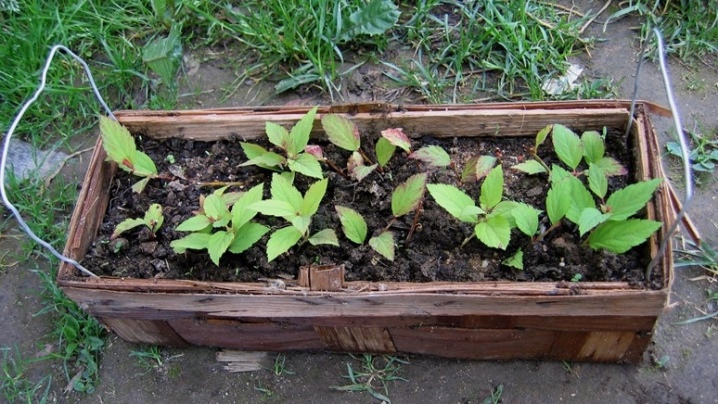
Green cuttings
Reproduction by green cuttings is carried out in the summer, when the time of flowering begins. Gardeners choose a strong shoot and cut it into cuttings. Each of them must have at least 4 sheets. The upper cut is made straight, and the lower (under the kidney) - oblique. To reduce evaporation, the leaves on the cuttings are cut in half, and the two leaves are removed from the bottom.
Further, for about 4 hours, the cuttings are kept in a solution that stimulates growth, or in settled water. After the lower media, they are treated with Kornevin powder and planted in vermiculite or wet sand.Deepen the cutting by no more than 3 centimeters.
The cuttings should be transplanted into a separate container at an inclination of about 40 degrees and covered with a thick film. The containers are left in a dark place. Spray the cuttings every day using a fine spray.
Layers
This technique is reliable and simple. It allows you to get young plants with little or no effort. Several shoots should be selected from the bottom of the shrub and placed in the furrows near the mother plant. The branches need to be pinned to the ground in several places.
Further, the shoots should be sprinkled with earth, leaving the top on the surface. She is tied to a peg. In the place where the shoot adheres to the ground, the soil should be constantly moistened. It is recommended to arrange a layer of grass or peat mulch. The new plant should be separated from the mother bush after a year, with the onset of next spring.
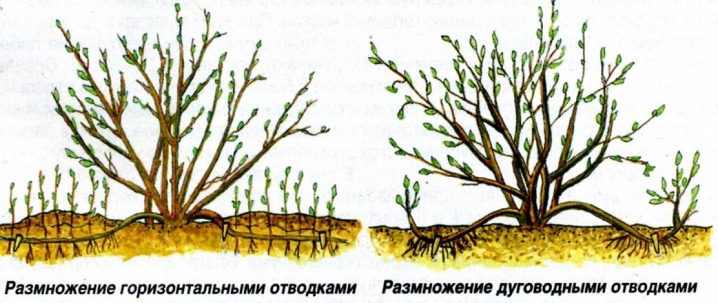
Division
This is the easiest way to propagate a plant. The roots of the shrub should be cleaned of clods of earth and divided into several parts. On each new plant, several strong and strong shoots should be left, at least 2 or 3. The procedure is carried out using a knife or secateurs. Places of cuts should be treated with coal powder or brilliant green.
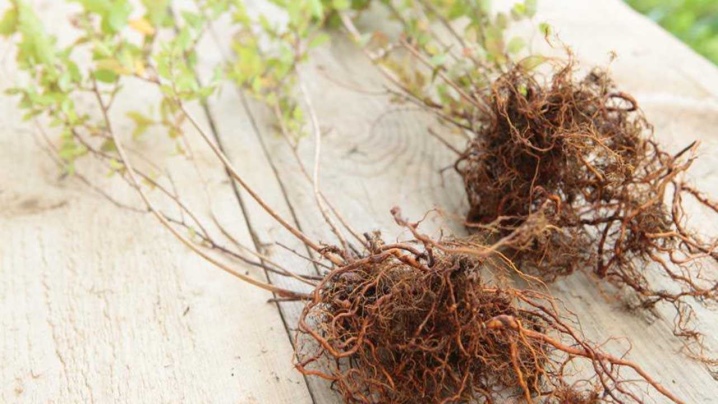
Cuttings in winter
Cuttings are cut from September to October. Leaves are removed. The cuttings are left in water for 2-3 hours and then planted in moist soil, deepening by 5-6 centimeters.
The planting site is covered with mulch from fallen leaves. As a rule, rooting occurs in the spring, with the arrival of heat.
For even more useful and important information about Frobeli spire, see the next video.
4. Reproduction
There are 3 ways of flower reproduction - seed or generative, vegetative - by cutting off roots or dividing large adult plants. Varietal and variegated bushes should be propagated only vegetatively, since only in this case they will be able to fully preserve the declared varietal characteristics of the parent plants.
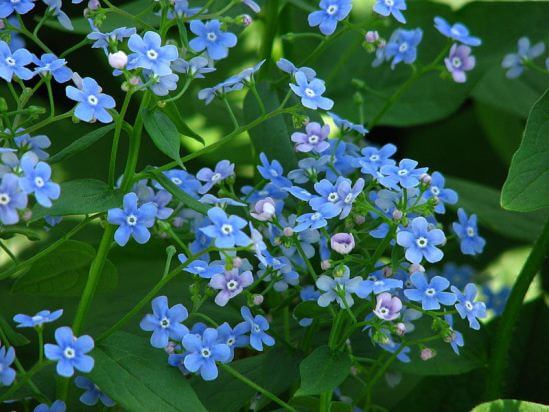
4.1 Growing from seeds
Brunner is often propagated by seeds sown directly into open ground during the fall months. For planting, it is worth choosing such a time so that night frosts do not occur within 2 weeks after sowing. With this method of reproduction, the planting material will be subjected to natural stratification. With spring sowing, the period of cool stratification should be organized artificially. For stratification, the planting material is placed in small bags and placed in the vegetable compartment of the refrigerator for 3 to 4 months.
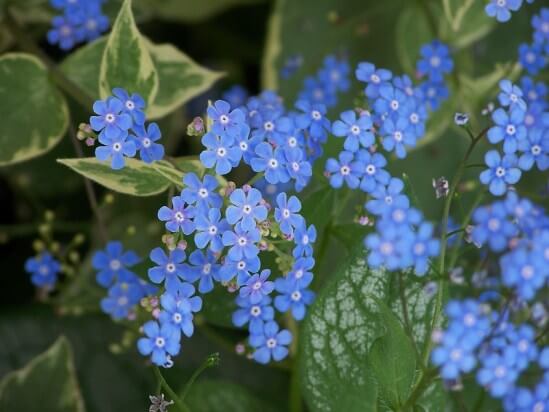
Seed propagation is not difficult and self-seeding can often be found when grown outdoors under mature plants. It is worth noting that species brunners will retain their appearance when grown from seeds, but varietal plants can be strikingly different from parental bushes.
For reproduction, you can use the planting material collected from flowering plants. Unfortunately, the seeds often do not have time to fully ripen, especially if night frosts began early in the autumn.
It is advisable to collect seeds in dry, warm and calm weather. After collecting, the change is dried for several days in a warm and ventilated room, and then sent to storage, sprinkled with slightly damp river sand and placed in paper bags or cloth bags.

Seeds are planted in open ground in the fall, before frost. A plot of land with shallow grooves is prepared for crops. Planting material is sealed to a depth of about 5-10 cm and watered abundantly. The first leaves will appear in this place in the spring, as the plants develop, they are planted.
Sowing in seedling containers is carried out in late winter - early spring. At the bottom of the containers, it is worth making drainage holes and filling them with a nutrient substrate. Sowing is carried out very shallowly, barely covering the seeds with soil, since they are quite small.The surface of the ground is moistened with a spray bottle and the container is covered with a lid to maintain high humidity.
Place the boxes in a warm and well-lit place without direct sunlight. The seedlings are ventilated daily, gradually increasing the time. Subject to agricultural technology, the first buds will decorate the bushes grown from seeds only for 3-4 years of life.
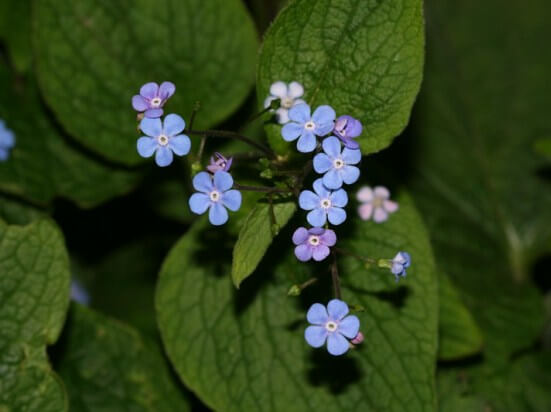
4.2 division of bushes
For rejuvenation, large-leaved brunners grown in the garden should be periodically divided and planted in different areas. It is worth carrying out the division after flowering - in the summer months, choosing for this not a hot and better cloudy day.
The bushes are dug out after flowering and the root system is washed with water. Plants are cut into pieces by hand or, if necessary, cut with a knife.
Most often, the use of tools is not required - if you pull in different directions, the plant itself disintegrates into parts. As a result of division, each part should receive its own root system with a bud of growth and sufficiently developed leaves.
The wound surface, which was formed during division, is sprinkled with crushed coal powder for drying and disinfection. Delenki are planted in the evening in different areas and in the first month they monitor the uniform moisture content of the soil around them.
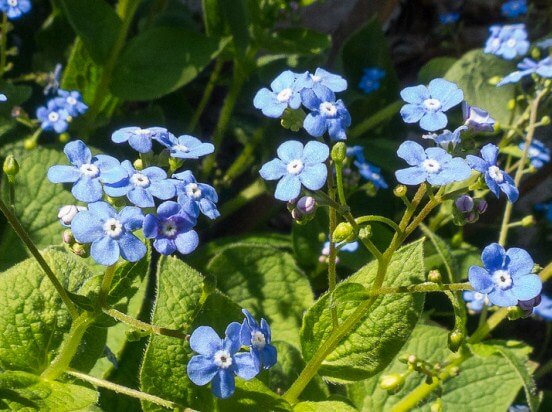
4.3. Reproduction by segments of rhizomes
Brunner Siberian reproduces by segments of rhizomes. The bushes are taken out of the ground after complete flowering, the root system is shaken off the ground. The roots are carefully examined and old, dead, or decayed areas are trimmed back to healthy tissue. Places of cuts are treated with wood ash or charcoal powder.
The division is carried out in such a way that a bud of growth is preserved on each obtained segment, the length of the parts obtained can be only 5 - 8 cm. Delenki are seated on the site and also watered abundantly. Such bushes will bloom next year.
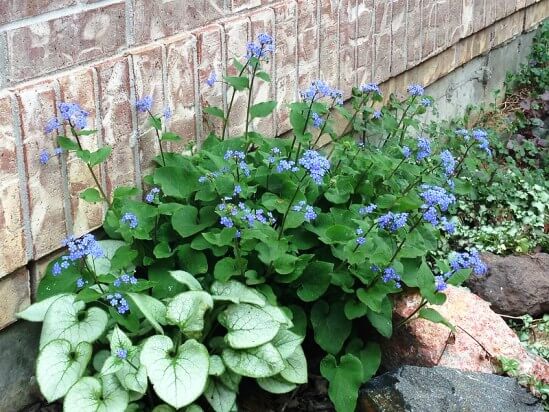
Reproduction methods
New bushes of spiraea japonica goldflame can be obtained using fairly simple methods. Saplings will turn out to be of high quality and strong if rooting is done correctly and on time.
Layers should be done in early spring, when leaves have not yet appeared on the bushes. To do this, take a young shoot and tilt it as close to the ground as possible.
In this case, it is important to fix it in a supine position with a bracket. Then sprinkle the shoot with soil.
In the future, it is necessary to make timely watering in order to prevent drying out. With this method, the roots will be formed by the fall. However, the resulting seedling must be separated from the bush only next year. It is important to choose only healthy shoots for seedlings.

